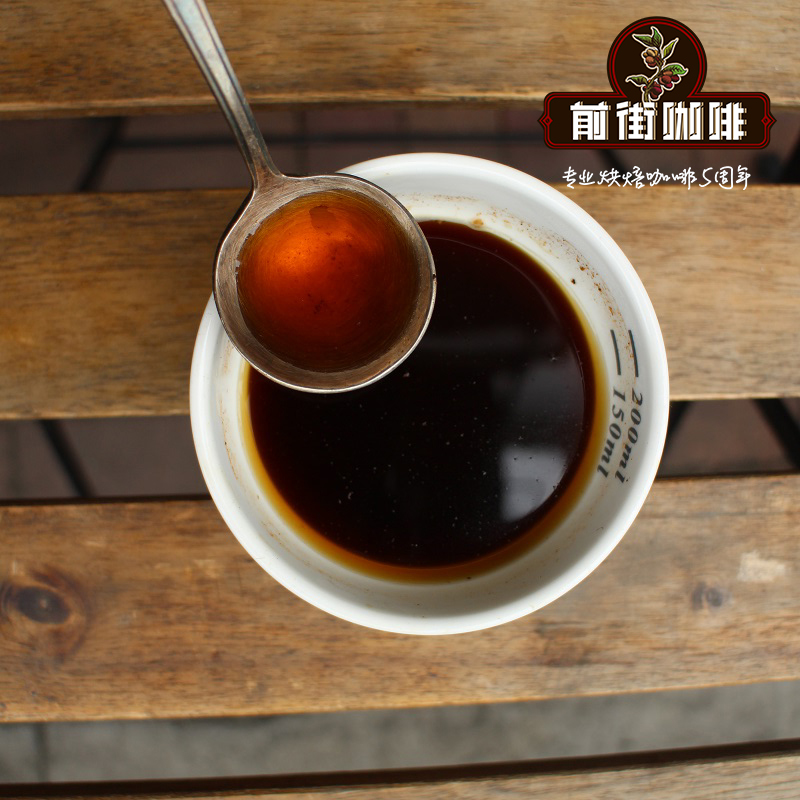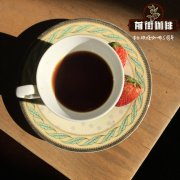What are the characteristics of Yemeni mocha coffee beans? What's so special about the planting history and environment?
What are the characteristics of Yemeni mocha coffee beans? What's so special about the planting history and environment? Where is the flavor going?

In fact, Yemen is located on the Arabian Peninsula of the Asian continent, but it is very close to Africa as long as it crosses the Red Sea and the Gulf of Aden Gulf of Aden. However, other Arab countries do not produce coffee, so the world classifies Yemen Coffee as a member of the North African coffee family. So what is Yemenmoka? Mocha is the export port of Yemen coffee, because it is difficult to name all the tiny sub-producing areas in the history of coffee trade, even though the coffee produced by these small producing areas is indeed very good. So the sun beans near the place of export, including East Africa, were exported from the port of Mocha to all parts of the world in the early days, and now the port of Mocha has long been silted up and disappeared. Many Ethiopian sun beans also name themselves mocha, such as the Haramoka, which we know well. I think this is because its flavor has something in common with Yemen coffee.
Shirazzi's selection of coffee
The most correct spelling of mocha coffee should be Al-Mahka, which is the Arabic spelling, but in the end, what you see on the sack is the correct spelling of Mocca or Mocha, regardless of some naming and spelling of trivial coffee is the world's most unique and expensive coffee, the overall style of [wild] or [natural] coffee flavor is extremely complex, for some people is spice smell pungent But in any case, you must try it sometime. You will find that you like this unique coffee very much among the several top leaf coffees bought from Direct Coffee. If you also fall in love with him deeply, it will be the beginning of a whole new coffee journey.
The opposite of the Yemeni coffee bean bag is Arabic.
Yemen is probably the first country in the world to use coffee as a cash crop. It is said that coffee was introduced by Muslim Sufi pilgrims from Ethiopia in the 6th century. Yemen's coffee culture is different from other regions. Exporters do not buy directly from the farm. Instead, they buy from the big market dealers in the middle, and the coffee received by the local market merchants all contain pods. The whole sun-dried coffee cherry is usually stored in the cellar, and the special flavor of the world's favorite Yemen coffee may come from their ancient way of trade. Yemen coffee farmers have not been affected by the way they trade through the market. The main reason is that the local coffee cultivation land is limited, coupled with high latitudes and limited water resources, its production is very scarce, and the demand for Yemen coffee is very high. Keep the price of Yemen coffee high.
The supreme Xilazi raw beans are complete without the empty shell beans and horned beans of Mary and Sonny.
The pictures below show that Shannani and Yishima both have a lot of empty beans and horned beans.
And in the picture below, the color of Sunani is not consistent, showing a crisscross of yellowish brown and fresh turquoise.
The picture below shows Yemenmoka Yishi Mary raw beans yellowish brown with obvious empty shell beans and carob beans.
There are nine small coffee producing areas in Yemen Haraz Shiraqi. Coffee is grown on terraces. There is no data to verify the wild varieties. What is so special about this bean? Haraaz Supreme Supreme Silazzi is a small batch mocha specially produced for single bean merchants. It may not be produced next year. Processors only buy ripe red coffee cherries from bean farmers instead of coffee pods harvested in unknown years and months, and then put them on a drying bed to dry. There is no impression of old leaf plates with different quality in old stock. It is the freshest leaf mocha harvested from October to December. It's the best customized Yemen coffee.
This is the coffee pod of Yemen, which was found by accident while baking Yemen mocha.
Farm characteristics
Farm farm name: Small producers small producing group
Name name: Haraaz Supreme supreme Hilazzi
Grade: naturally dried Arabica beans, no regulatory body, no grading system
Producing area: Haraaz Shirazzi
Country: Yemen Yemen
Altitude: 1900-2400 m
Certification: without certification, all coffee is grown organically in accordance with the ancient method, and pesticides containing chemicals are not used.
Coffee characteristics
Varieties: 10 special native mocha species are mainly Jaa'di,Taffahi and Dawairi.
Treatment: Method Red ripe cherries dried on Africa Bed ripe cherry fruits are dried in an African (sun) elevated bed.
Harvest time: the harvest period of major crops is from October to December, and the second harvest is in some producing areas in April.
Comments: the baking degree measured by the cup for 60 seconds at the beginning of the first explosion
Aroma / flavor flavor: banana, pear, vanilla, bergamot, grape, chrysanthemum sweet, liquor, maple syrup, longan, raspberry wine, chocolate
Acidity: elegant, tartaric acid, mint, tropical fruit acid, lively sour taste
Complexity and other other: very fresh, excellent cleanliness, good balance, complexity, long finish, very sweet, burst after cooling
Fermented fruit mellow taste
Cup test score and overall review of direct coffee
Overall comment: leaf supreme Hilazi Haraaz Supreme raw beans are full of wine aroma, the taste is not woody, very clean and fresh, not dominated by fermented fruit, but fresh fruit and melon sweet is rare in other leaf beans, the whole aroma is low and close to the entrance rhyme before exploding is the freshest leaf top coffee.
Important Notice :
前街咖啡 FrontStreet Coffee has moved to new addredd:
FrontStreet Coffee Address: 315,Donghua East Road,GuangZhou
Tel:020 38364473
- Prev

What are the characteristics of sun-treated coffee beans in India-Alecon Farm?
What are the characteristics of sun-treated coffee beans in Alecon Farm, a Budan producing area in India? Coffee was brought into the establishment of the first coffee farm by pilgrims as early as the 16th century, and you might not imagine that India produces much more coffee than Ethiopia and any Central American country, with 900000 hectares of land growing coffee beans. India has more than 90% of 140000 coffee farms.
- Next

Yemeni mocha-Saber, is it good? What is the difference between flavor trend and characteristics?
Yemeni mocha-Saber, is it good? What is the difference between flavor trend and characteristics? Producing area is Saber Yemen Sabri Saber is not in 9 small producing areas of coffee, coffee is grown on terraces, there is no data to verify the wild varieties, what is so special about this bean? Because the arable rare terraces are covered with Qat grass, which is said to have a mild and refreshing effect, Yemen Sabr
Related
- Detailed explanation of Jadeite planting Land in Panamanian Jadeite Manor introduction to the grading system of Jadeite competitive bidding, Red bid, Green bid and Rose Summer
- Story of Coffee planting in Brenka region of Costa Rica Stonehenge Manor anaerobic heavy honey treatment of flavor mouth
- What's on the barrel of Blue Mountain Coffee beans?
- Can American coffee also pull flowers? How to use hot American style to pull out a good-looking pattern?
- Can you make a cold extract with coffee beans? What is the right proportion for cold-extracted coffee formula?
- Indonesian PWN Gold Mandrine Coffee Origin Features Flavor How to Chong? Mandolin coffee is American.
- A brief introduction to the flavor characteristics of Brazilian yellow bourbon coffee beans
- What is the effect of different water quality on the flavor of cold-extracted coffee? What kind of water is best for brewing coffee?
- Why do you think of Rose Summer whenever you mention Panamanian coffee?
- Introduction to the characteristics of authentic blue mountain coffee bean producing areas? What is the CIB Coffee Authority in Jamaica?

